Understanding Plumber Gas
Definition and Overview
Plumber gas is an intriguing yet vital element in the world of modern plumbing, often operating behind the scenes but crucial for safety and efficiency. It refers to the specific gases used in plumbing systems, primarily for appliances like gas stoves, water heaters, and boilers. Understanding the definition of plumber gas is essential, especially considering its potential risks and the importance of proper installation and maintenance.
In essence, plumber gas encompasses various types of combustible gases that, if mishandled, can pose serious hazards. These gases are carefully regulated and require specialized knowledge for handling, which is why professional plumbers with expertise in plumber gas are in high demand. The overview of plumber gas reveals a complex landscape where safety protocols and technical precision are paramount.
- Natural Gas
- Propane
- Butane
Knowing the differences among these gases and their specific applications helps prevent dangerous leaks and ensures that plumbing systems operate seamlessly. Whether it’s a residential property or a commercial setup, understanding what plumber gas entails is the first step in safeguarding lives and property from the silent threat of gas-related mishaps.
Common Uses of Plumber Gas
In the shadowed corridors of modern plumbing, plumber gas whispers its silent promise—an unseen force powering the comforts we take for granted. Its common uses are woven into the fabric of everyday life, yet its presence remains a dark secret lurking behind the scenes. From the warm embrace of a water heater to the fiery dance of a gas stove, plumber gas fuels processes vital to both homes and industries.
Understanding the common uses of plumber gas reveals a world where safety and precision intertwine. It is not merely about igniting flames but ensuring that each connection, each valve, breathes life into appliances without risking catastrophe. Natural gas, propane, and butane are the primary players, each with unique properties that demand respect and expertise. Whether illuminating a kitchen or heating water in the depths of a boiler, plumber gas is the unseen force that keeps the machinery of modern existence turning smoothly.
Types of Gases Used in Plumbing
Understanding the various types of plumber gas is essential for ensuring safety and efficiency in plumbing systems. In South Africa, natural gas, propane, and butane are the primary gases used, each with distinct characteristics that influence their application. Natural gas, often called the “clean energy” of choice, burns more efficiently and produces fewer emissions, making it ideal for both residential and industrial use.
Propane and butane, on the other hand, are stored in pressurized cylinders and are prized for their portability and high energy output. These gases are particularly valuable in areas where pipeline infrastructure is limited, providing a versatile solution for heating and cooking needs. Understanding the differences between these gases helps plumbers select the right type of plumber gas for each situation, ensuring safety and optimal performance.
In many South African households, the choice of plumber gas is more than a matter of convenience; it’s a reflection of local safety standards and resource availability. Whether used for heating water, powering appliances, or industrial processes, each gas type plays a vital role in the modern plumbing landscape. Proper handling and knowledge about these gases are crucial, as their flammable nature demands respect and precise management.
Safety Considerations When Working with Plumber Gas
Hazards Associated with Plumber Gas
Safety considerations when working with plumber gas are not just precautions—they are fundamental to safeguarding lives and property. In South Africa, where plumbing systems often incorporate various types of plumber gas, understanding the hazards is crucial. These gases, if mishandled, can lead to devastating explosions or toxic exposures that threaten both workers and residents.
The key to mitigating these risks lies in rigorous adherence to safety protocols. Proper ventilation, regular leak testing, and the use of protective equipment are non-negotiable. It’s also vital to recognize the signs of gas leaks early—such as unusual smells or hissing sounds—and respond immediately. Remember, plumber gas is highly flammable, and even a small spark can cause catastrophic consequences.
- Ensure all plumbing work involving plumber gas is performed by certified professionals.
- Maintain a comprehensive safety checklist before initiating any gas-related task.
- Regularly inspect and service gas fittings to prevent leaks and corrosion.
Ultimately, respecting the volatile nature of plumber gas isn’t just a matter of compliance; it’s a commitment to community safety and the integrity of your work.
Proper Handling and Storage
Handling plumber gas isn’t a task for the faint-hearted or the careless. Its volatile nature demands respect, not a casual shrug. Proper handling and storage of plumber gas are paramount to prevent disasters that could turn a routine plumbing job into a catastrophe. In South Africa, where underground gas lines are as common as braais, understanding the ins and outs of safe storage is essential.
First and foremost, always store plumber gas in well-ventilated areas, away from ignition sources, and in approved containers. A little common sense goes a long way—think of plumber gas as that overly excitable guest who needs constant supervision! To keep everything shipshape, consider implementing a safety checklist, which should include:
- Securing gas cylinders upright to prevent leaks
- Regular inspection for corrosion or damage
- Ensuring caps are tightly sealed when not in use
Remember, a small mistake with plumber gas isn’t just a blip on the safety radar—it can be a full-blown emergency. Proper storage isn’t just about compliance; it’s about protecting lives and property from a fiery fate!
Safety Equipment and Precautions
Working with plumber gas requires not just technical skill but a vigilant attitude towards safety. In South Africa, where underground pipelines and gas systems are woven into the fabric of daily life, understanding the importance of safety equipment is crucial. The volatile nature of plumber gas makes it imperative to adopt rigorous precautions—one small oversight could have catastrophic consequences.
Proper safety equipment acts as your first line of defense. Always wear approved protective gear, including gloves, safety goggles, and respiratory masks, to shield yourself from potential leaks or accidental exposure. It’s equally vital to verify that all safety devices, such as gas detectors and shut-off valves, are functioning correctly before commencing work.
Additionally, follow these essential precautions:
- Ensure all gas cylinders are stored upright and secured to prevent accidental tipping.
- Regularly inspect safety equipment and plumbing connections for signs of corrosion or damage.
- Keep emergency shut-off valves accessible and clearly marked for quick action if needed.
By prioritizing safety equipment and precautions when working with plumber gas, professionals protect not only themselves but also their communities. Every step taken to enhance safety measures is a step toward a safer, more resilient South African plumbing industry, where lives and livelihoods are safeguarded from preventable hazards.
Signs of Gas Leaks
In the intricate world of plumbing, a silent threat often lurks unseen—plumber gas. Its presence can be subtle, yet the consequences of a leak are anything but. The danger isn’t merely hypothetical; in South Africa, where underground pipelines snake beneath our cities and towns, understanding how to recognize signs of gas leaks is vital for every professional and homeowner alike.
Signs of plumber gas leaks can manifest unexpectedly. A persistent, rotten egg smell is a classic indicator, but sometimes the scent is faint or masked by other odors. Unusual hissing sounds near pipelines, a sudden rise in gas bills, or even the presence of bubbles in water fixtures can herald a leak. These clues demand immediate attention, as delays can escalate into dangerous situations.
Maintaining vigilance is crucial. Regularly inspecting plumbing connections and listening for odd noises helps catch leaks early. Remember, safety is a shared responsibility—never ignore warning signs when working with plumber gas. The stakes are high, and a swift response can prevent catastrophe, safeguarding lives and property across South Africa’s vibrant communities.
Plumber Gas Installation and Maintenance
Steps for Proper Installation
In the intricate dance of ensuring safety and efficiency, the installation and maintenance of plumber gas demand a meticulous touch—an unyielding commitment to precision that borders on artistry. It’s a realm where every joint, every seal, and every connection must be approached with unwavering focus, for the stakes extend far beyond mere functionality. Proper installation of plumber gas is not just about fitting pipes; it’s about creating a seamless conduit that withstands the test of time and pressure, preventing catastrophic leaks and hazards lurking in the shadows.
To achieve such mastery, professionals often adhere to a structured process, beginning with thorough site assessment and careful selection of materials. Next, following a sequence of steps ensures the integrity of the entire system:
- Securely shut off all main power and gas supplies before commencing work.
- Inspect all pipes and fittings for defects or corrosion, replacing any compromised components.
- Use high-quality, compatible materials designed specifically for plumber gas systems.
- Follow manufacturer specifications and local regulations for connection points and pressure testing.
- Perform rigorous leak testing using soapy water or electronic detectors to verify integrity.
Maintenance is equally vital. Regular inspections, prompt repairs of any signs of deterioration, and adherence to safety protocols help sustain the system’s longevity and safety. It’s a delicate balance—an ongoing commitment to vigilance and craftsmanship that transforms a simple piping network into a fortress of trust, ensuring that plumber gas functions seamlessly, safely, and without incident in South Africa’s dynamic environment.
Inspection and Testing Procedures
In the realm of plumbing mastery, the installation and maintenance of plumber gas systems are akin to the forging of an enchanted conduit—silent yet vital, holding the power to sustain life’s daily rhythm. Regular inspection and testing are the guardians that ensure these systems remain unblemished by time and wear. According to industry experts, a well-maintained plumber gas setup can last decades, provided it’s subjected to vigilant scrutiny and meticulous care.
To uphold the integrity of plumber gas systems, a rigorous inspection process is indispensable. This involves checking for corrosion, loose fittings, and potential leak points—each a whisper of impending danger if left unaddressed. Testing procedures often incorporate modern electronic detectors or the classic soap solution, revealing even the faintest signs of leakage. Safety is paramount, and a trusted approach involves a combination of visual, tactile, and electronic assessments.
When it comes to testing, adhering to a step-by-step protocol ensures nothing escapes notice. These steps include:
- Shutting off all gas supplies before beginning inspection.
- Examining all joints, seals, and fittings for integrity and corrosion.
- Conducting leak tests with soapy water or electronic gas detectors.
- Recording findings meticulously and addressing any anomalies immediately.
In South Africa’s vibrant landscape, the proper upkeep of plumber gas systems becomes a safeguard against unseen hazards. Routine maintenance not only sustains operational efficiency but also fortifies safety—transforming a complex network of pipes into an unbreakable shield of trust and reliability. Every inspection is a step closer to peace of mind, ensuring the seamless flow of what powers homes and industries alike.
Common Maintenance Tasks
When it comes to maintaining a plumber gas system, routine upkeep isn’t just a chore—it’s a lifesaver. In South Africa’s dynamic environment, ensuring the proper installation and ongoing maintenance of plumber gas can prevent catastrophic failures and safeguard household comfort. These systems require more than just initial setup; they demand vigilant attention to detail that keeps every connection secure and every pipe sound.
Common maintenance tasks include inspecting for corrosion, tightening fittings, and checking for any signs of leaks. Regularly cleaning and lubricating valves also prolongs the lifespan of your plumber gas system, ensuring it functions smoothly year after year. For added assurance, many professionals recommend incorporating electronic leak detectors into your maintenance routine—these devices can catch even the faintest gas escapes before they escalate into dangerous situations.
To keep everything in check, consider this straightforward process:
- Shut off the gas supply before starting any inspection.
- Visually check all joints, seals, and fittings for corrosion or damage.
- Test for leaks using soapy water or electronic detectors.
- Record findings and perform repairs immediately if issues are detected.
Engaging in these routine tasks not only preserves the integrity of your plumber gas system but also fortifies safety—turning what might seem like mundane maintenance into a fortress against unseen hazards. Every step taken in the maintenance process reinforces trust in the system that powers homes and industries across South Africa, ensuring seamless operation and peace of mind for years to come.
Regulations and Compliance Standards
In South Africa, the regulation of plumber gas installation and maintenance is not merely a bureaucratic requirement; it is a vital safeguard against potential disaster. With a history of incidents stemming from non-compliance, South African authorities have established rigorous standards to ensure safety and reliability. These regulations are rooted in the fundamental principle that every plumber gas system must adhere to precise specifications, designed to prevent leaks and hazardous failures.
Compliance standards for plumber gas are outlined by local authorities and industry bodies, emphasizing the importance of certified installation practices, regular inspections, and meticulous record-keeping. The South African National Standards (SANS) provide a comprehensive framework that guides professionals through every phase—from initial setup to ongoing maintenance. It is essential for both contractors and homeowners to recognize that failure to align with these standards can lead to severe penalties, as well as compromising safety and operational integrity.
To maintain compliance, many professionals follow an ordered approach:
- Ensure installation is performed by certified and accredited technicians.
- Use only approved materials and components that meet SANS specifications.
- Conduct rigorous pressure testing and leak detection post-installation.
- Implement a strict maintenance schedule with documented inspections and repairs.
Engaging with licensed experts who understand the intricacies of plumber gas regulations is crucial. Not only does this ensure adherence to legal standards, but it also reinforces the trust that every connection, joint, and valve operates within safe parameters—protecting lives, property, and the environment from unseen yet devastating hazards.
Tools and Equipment for Plumber Gas Work
Essential Tools Used
In the realm of plumber gas work, precision and safety hinge on the right tools—each one a vital thread woven into the fabric of flawless installation and maintenance. When working with plumber gas, having a well-stocked toolkit transforms complex tasks into almost artful endeavors. It’s not just about the equipment; it’s about the confidence that comes with mastery over each instrument.
Essential tools for plumber gas include a robust selection of wrenches, pipe cutters, and pressure gauges—each designed to ensure airtight seals and optimal flow. A gas leak detector, perhaps the most crucial piece of equipment, acts as a guardian against unseen dangers, alerting the technician to the faintest whisper of trouble. For efficiency, many professionals also rely on specialized threaders and flare tools to shape and connect pipes seamlessly.
- Gas leak detectors
- Pipe wrenches and adjustable spanners
- Pressure gauges
- Threading and flare tools
- Pipe cutters and benders
Specialized Equipment
In the intricate dance of plumber gas work, the right tools are the enchanted instruments that transform complex tasks into seamless artistry. Each piece of specialized equipment serves as a vital key in unlocking safety, precision, and efficiency. When wielded with mastery, these tools elevate the craft, ensuring that every connection is as secure as a fortress and every joint as tight as a whisper.
Among the arsenal of plumber gas tools, gas leak detectors stand as silent guardians, tirelessly alert to the faintest signs of danger. Their sensitivity is unmatched, providing peace of mind during installation and maintenance. Pipe wrenches and adjustable spanners, with their formidable grip, conquer stubborn fittings, while pressure gauges monitor the heartbeat of the system, ensuring optimal flow and safety. For shaping and connecting pipes, threading and flare tools are indispensable, offering flawless precision in every twist and turn. Pipe cutters and benders weave their magic, transforming raw materials into perfect forms that fit seamlessly into the grand design.
To capture the essence of plumber gas mastery, consider this list of essential equipment:
- Gas leak detectors
- Pipe wrenches and adjustable spanners
- Pressure gauges
- Threading and flare tools
- Pipe cutters and benders
Each tool is a chapter in the legend of plumber gas, a testament to craftsmanship and unwavering safety standards. The mastery of these specialized tools not only ensures flawless installation but also crafts a narrative of trust and reliability in every project undertaken.
Recommended Brands and Quality Tips
Choosing the right tools and equipment for plumber gas work is crucial. High-quality brands stand out by offering durability, precision, and safety. Trusted names like Ridgid, Rothenberger, and Milwaukee consistently deliver tools that meet industry standards, making them favorites among professionals in South Africa.
When selecting equipment, focus on quality to ensure safety and reliability. Investing in reputable brands reduces the risk of failure during crucial moments, such as leak detection or pipe fitting. For example, gas leak detectors from well-known brands provide the sensitivity needed to identify even the faintest traces of gas, safeguarding both workers and clients.
To streamline your workflow, consider these essential tools for plumber gas:
- Gas leak detectors
- Pipe wrenches and adjustable spanners
- Pressure gauges
- Threading and flare tools
- Pipe cutters and benders
Remember, choosing equipment from reputable manufacturers and adhering to quality tips ensures your plumber gas projects are safe, efficient, and built to last. Proper tools aren’t just accessories—they’re the backbone of every successful installation and maintenance task in the profession.
Troubleshooting and Repairs Involving Plumber Gas
Identifying Common Issues
In the labyrinthine world of plumbing, a rogue plumber gas leak can turn a seemingly simple fix into a full-blown emergency faster than you can say “hazardous!” Identifying common issues with plumber gas requires a keen eye and a nose that’s not afraid to sniff out trouble. Often, the first sign of a leak is a faint, yet persistent smell of rotten eggs—an olfactory warning that should never be ignored.
When troubleshooting, it’s crucial to check for any irregularities in gas pressure and ensure that all connections are secure. Loose fittings or corroded pipes are frequent culprits. Sometimes, the problem isn’t as obvious as a leak; it could be a faulty gas regulator or a malfunctioning valve. Here’s a quick rundown of common issues to watch out for:
- Unusual smells near plumbing fixtures
- Hissing sounds indicating escaping gas
- Fluctuating gas pressure or inconsistent appliance performance
If any of these symptoms surface, it’s time for a systematic inspection. Remember, when dealing with plumber gas, safety is paramount—never attempt repairs if you’re unsure, and always call in a professional to handle complex repairs or leaks. After all, a small oversight can turn into a big disaster in the blink of an eye!
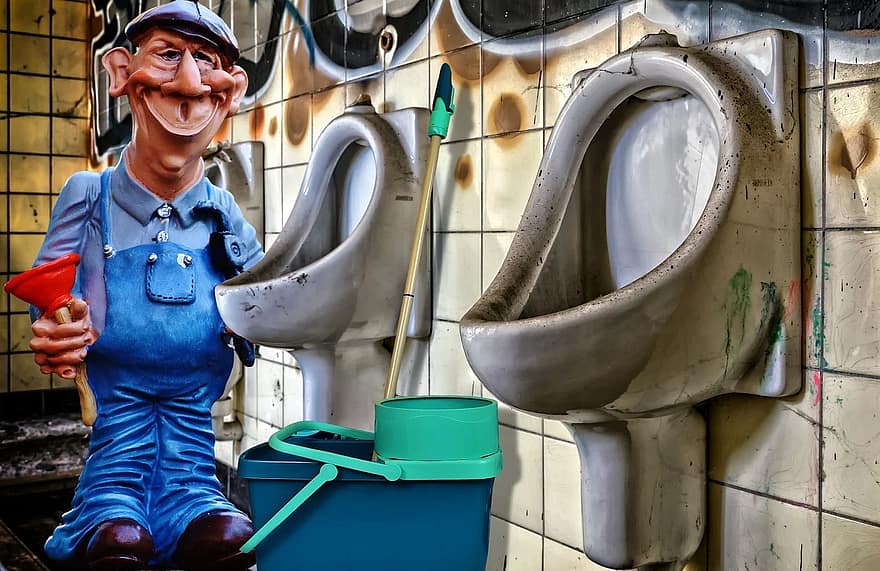
Repair Techniques
When it comes to troubleshooting plumber gas issues, precision and caution are everything. Gas leaks can escalate rapidly, so understanding the core repair techniques is vital for safety and efficiency. The first step often involves locating the source of the leak, which may be hidden behind walls or beneath flooring. Using a gas detector or a soap solution to identify escaping gas is a common method that helps pinpoint trouble spots without invasive procedures.
Once the leak is identified, the next step involves repairing the faulty component. Loose fittings or corroded pipes are frequent culprits, and tightening or replacing them can often resolve minor issues. For more persistent problems, such as a malfunctioning gas regulator or defective valve, it’s best to call in a qualified professional. Specialist tools, like pressure gauges and leak detection sprays, aid in thorough inspection and testing, ensuring the integrity of your plumber gas system before reactivating the supply.
In some cases, a systematic approach is necessary to restore safety and functionality. Here’s a quick outline of the typical repair sequence:
- Ensure the gas supply is shut off before starting any repair work.
- Visually inspect all connections for signs of wear or damage.
- Use a soap solution or gas detector to locate leaks precisely.
- Secure or replace defective fittings, pipes, or valves as needed.
- Conduct a pressure test to confirm the repair’s success.
- Gradually restore the gas supply, monitoring for unusual smells or hissing sounds.
Remember, working with plumber gas isn’t a DIY adventure—when in doubt, always call a licensed professional. Their expertise ensures your home remains safe while fixing the problem swiftly and effectively. Proper repair techniques and a cautious approach can turn a potential hazard into a story of success—keeping your plumbing system safe and reliable for years to come.
When to Call a Professional
Troubleshooting and repairs involving plumber gas demand a careful approach, as even a small mistake can lead to serious hazards. If you notice a persistent smell of gas or hear a hissing sound near your plumbing system, it’s time to act promptly. While some minor leaks can sometimes be addressed safely, many issues require professional intervention.
When it’s clear that the problem exceeds basic troubleshooting, calling a licensed plumber gas specialist is crucial. They have the expertise and specialized equipment—like pressure gauges and leak detection sprays—to accurately identify the source of the leak. Attempting to fix complex issues such as faulty valves or corroded pipes without proper training can escalate risks rather than resolve them.
In urgent situations, such as suspected gas leaks, ensure the gas supply is shut off immediately. Here is a quick overview of when to seek professional help:
- If you cannot locate the leak with a soap solution or gas detector.
- If the leak is coming from a damaged or corroded pipe.
- If faulty regulators or valves are involved.
- When the leak persists after initial repairs.
Never compromise safety; the expertise of a qualified plumber gas technician ensures the issue is resolved safely and complies with all local regulations.
Legal and Regulatory Guidelines for Plumber Gas
Licensing Requirements
In South Africa, the regulation of plumber gas isn’t just a bureaucratic headache — it’s a matter of life and death. With gas leaks causing more than a few fiery mishaps, authorities have set stringent licensing requirements to ensure only the crème de la crème handle these volatile substances. The legal and regulatory landscape surrounding plumber gas is designed to prevent amateur hour from turning into a disaster scene.
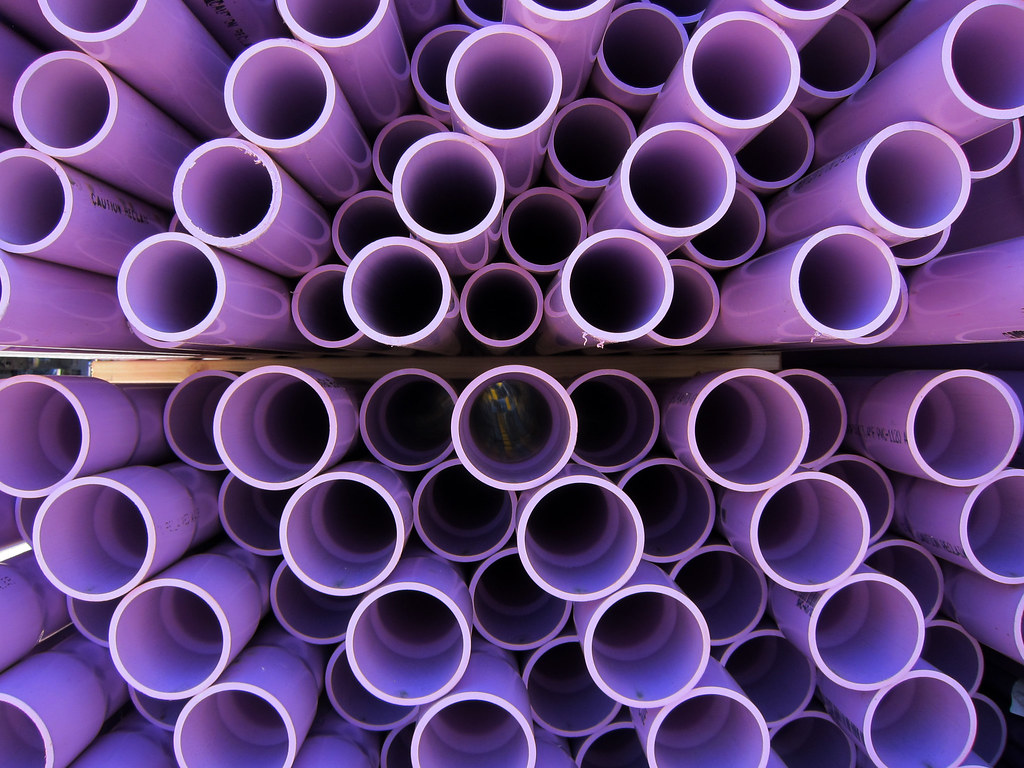
Compliance isn’t optional; it’s a legal obligation. Licensed plumbers must adhere to standards laid out by South Africa’s Department of Labour and other regulatory bodies. These guidelines specify everything from proper installation techniques to meticulous record-keeping. To get that coveted license, a plumber must demonstrate mastery over safety protocols and a thorough understanding of gas regulations. Failure to comply can result in hefty fines or even criminal charges, making it clear that in the world of plumber gas, cutting corners is a one-way ticket to trouble.
- Obtaining proper certification
- Adhering to national safety standards
- Regular inspections and audits
- Keeping detailed logs of all gas-related work
For those who dare to dabble without the necessary credentials, the risks are not just legal; they’re downright hazardous. So, professional licensing isn’t just a bureaucratic hoop — it’s a vital safeguard in the perilous world of plumber gas. After all, nothing says “professional” like knowing exactly what you’re doing with gas that could erupt in a fiery spectacle if mishandled.
Permits and Inspection Processes
In South Africa, navigating the legal and regulatory landscape of plumber gas isn’t just a bureaucratic hurdle—it’s a safety imperative that can’t be overlooked. The government’s stringent guidelines are designed to prevent catastrophic incidents, emphasizing the importance of compliance for every professional handling gas. Ensuring that permits are issued only after thorough inspection processes guarantees that safety standards are met at every stage of installation and maintenance.
Authorities conduct meticulous inspections to verify that all plumbing work involving plumber gas adheres to national safety standards. These inspections often follow an ordered sequence:
- Initial site assessment
- Review of installation techniques
- Verification of safety equipment and ventilation
- Final testing to confirm leak-free operation
This process isn’t just about ticking boxes; it’s a safeguard that prevents dangerous leaks and explosions. Regular audits and detailed logs of gas-related work further ensure ongoing compliance, creating a robust safety net for professionals and homeowners alike. In South Africa, adhering to these regulations transforms a routine task into a vital act of safety—because with plumber gas, there’s no room for error.
Environmental Regulations
In South Africa, environmental regulations surrounding plumber gas are designed to protect both the environment and public health. These strict guidelines ensure that gas handling, storage, and disposal meet national standards, reducing the risk of leaks and pollution. Compliance isn’t just about following rules; it’s about safeguarding communities and preserving local ecosystems for future generations.
Authorities enforce comprehensive standards that govern every aspect of plumber gas management. This includes emissions control, safe waste disposal, and the use of environmentally friendly materials. To meet these requirements, professionals often need to adhere to a set of detailed procedures, such as:
- Proper storage of gas cylinders to prevent leaks and spills
- Use of environmentally safe venting systems
- Regular monitoring of emission levels
By strictly following these environmental regulations, plumbers contribute to a cleaner, safer South Africa. Their commitment to eco-friendly practices ensures that plumber gas remains a reliable resource without compromising the health of our planet or its inhabitants.
Emerging Trends and Technology in Plumber Gas
Innovative Gas Detection Devices
In the realm of plumber gas, innovation is transforming safety protocols with astonishing speed. Emerging trends in gas detection devices are now prioritizing precision and user-friendliness, ensuring that even the most seasoned plumbers can identify leaks swiftly and accurately. The advent of innovative gas detection devices—equipped with smart sensors and real-time reporting—marks a significant leap forward. These devices not only detect a broader spectrum of gases but also do so with unparalleled sensitivity, reducing the risk of unseen hazards lurking in dark corners of old plumbing systems.
Moreover, the integration of wireless technology into gas detection devices enhances diagnostic capabilities, allowing plumbers to monitor multiple sites remotely. This means fewer surprises during inspection and a more proactive approach to maintaining safe plumbing environments. For those committed to compliance and safety, these advancements are nothing short of a game-changer. As the industry adapts to these technological strides, it’s clear that the future of plumber gas management is leaning heavily toward automation and intelligent detection systems, making traditional methods seem almost quaint by comparison.
Advances in Safe Plumbing Materials
Emerging trends in plumber gas technology are revolutionizing the way professionals approach safety and efficiency in the field. Cutting-edge advancements in gas detection devices now leverage smart sensors and wireless connectivity, making leaks easier to identify with unmatched accuracy. These innovations are especially vital in South Africa, where aging infrastructure often conceals hidden hazards that can escalate rapidly.
One of the most exciting developments is the integration of real-time reporting systems, allowing plumbers to monitor multiple sites remotely. This not only minimizes downtime but also enhances safety protocols by providing instant alerts when dangerous levels of plumber gas are detected. As the industry leans toward automation, newer materials and safer gas handling practices are emerging, helping to prevent leaks before they occur.
In the realm of safe plumbing materials, the focus is increasingly on corrosion-resistant pipes and fittings that withstand the corrosive nature of certain gases. Some companies are pioneering the use of high-density polyethylene (HDPE) piping, which offers remarkable durability and chemical resistance. This shift in material science aligns perfectly with the push for safer, more sustainable plumber gas systems—ensuring longevity and reducing environmental impact.
Energy-Efficient Gas Systems
Emerging trends in plumber gas technology are transforming the industry with a focus on energy efficiency and safety. New systems are designed to optimize gas consumption, reducing waste and lowering operational costs for both residential and commercial applications in South Africa. Innovative gas management solutions now incorporate smart meters and automated controls that precisely monitor usage, ensuring minimal wastage and maximum safety.
One notable advancement is the shift towards energy-efficient gas systems that leverage advanced burner technology and improved insulation. These systems not only deliver better performance but also significantly cut down on greenhouse gas emissions. Additionally, the integration of wireless communication allows for real-time data transmission, enabling quick responses to potential leaks or malfunctions. This proactive approach is vital in regions where aging infrastructure can obscure hidden hazards.
To enhance safety further, some companies are deploying layered safety protocols involving sophisticated sensors and remote monitoring tools. These innovations make detecting leaks easier and faster, preventing dangerous situations before they escalate. With the continuous evolution of plumber gas technology, the industry is pushing toward more sustainable, safer, and cost-effective solutions for all users.

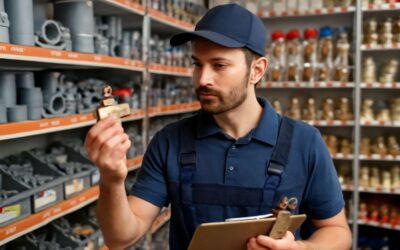
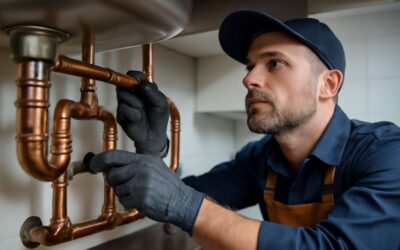
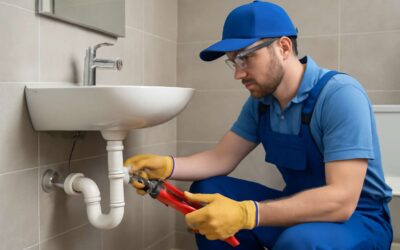
0 Comments